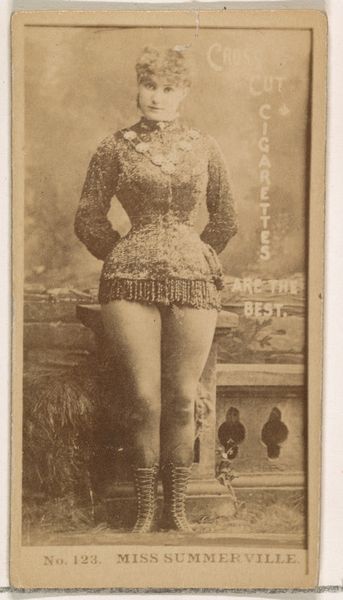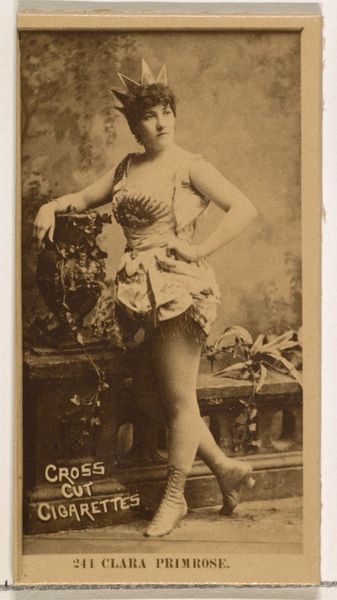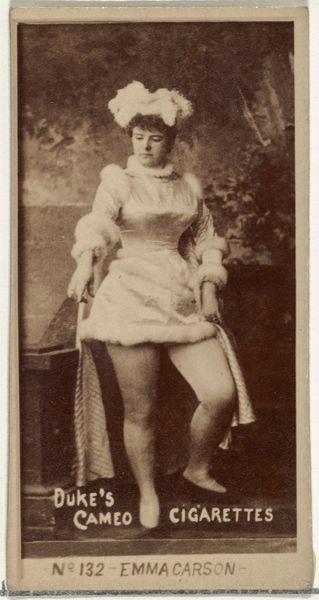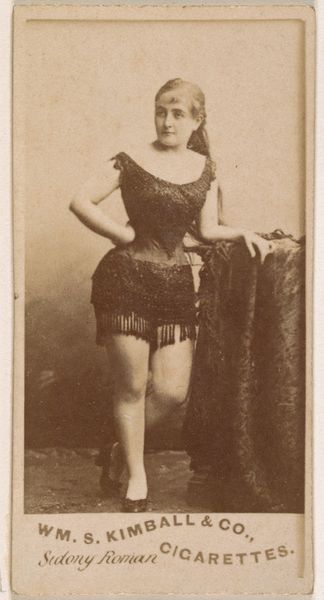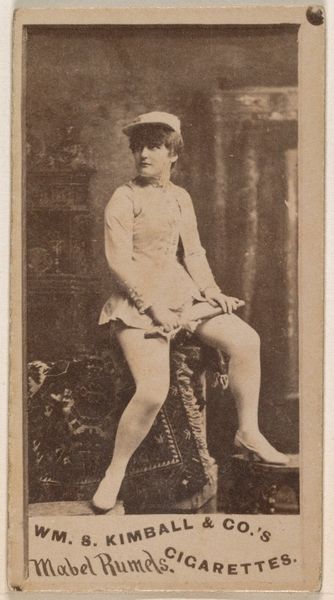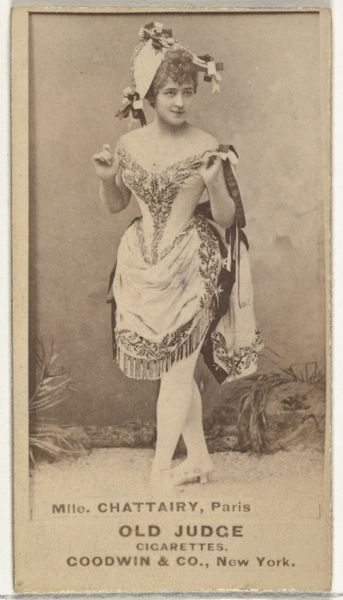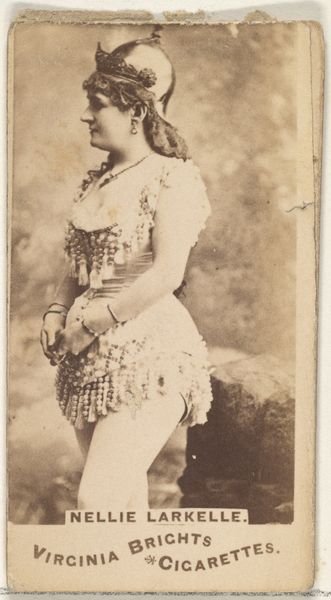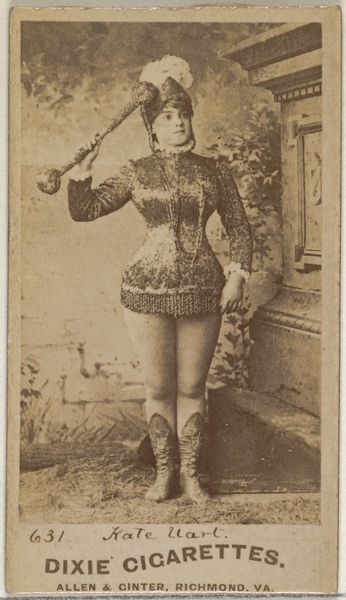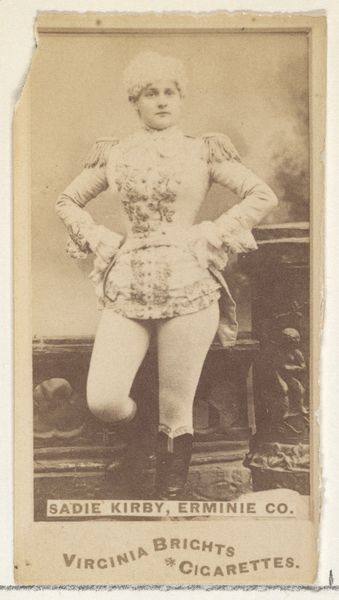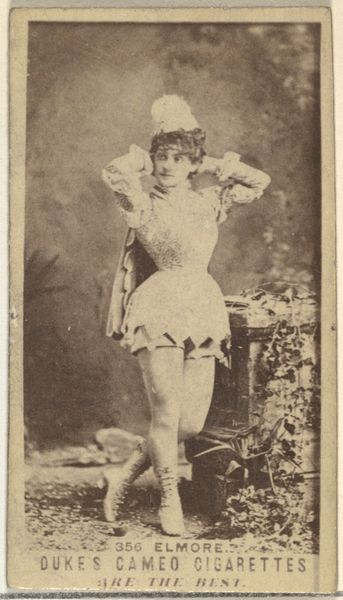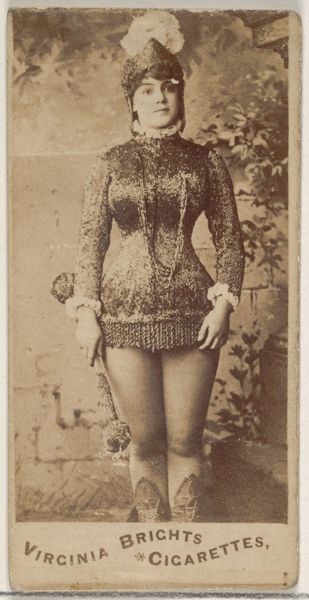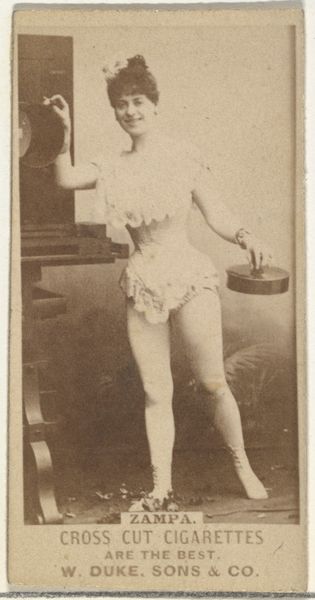
Card Number 340, Irene Verona, from the Actors and Actresses series (N145-3) issued by Duke Sons & Co. to promote Cross Cut Cigarettes 1880s
0:00
0:00
drawing, print, photography
#
portrait
#
drawing
# print
#
photography
#
19th century
Dimensions: Sheet: 2 11/16 × 1 3/8 in. (6.8 × 3.5 cm)
Copyright: Public Domain
Curator: This card, "Number 340, Irene Verona," hails from the 1880s. It’s part of the Actors and Actresses series (N145-3) issued by Duke Sons & Co. as promotional material for Cross Cut Cigarettes. Editor: Immediately, I’m struck by the rigid posture and almost theatrical presentation of this woman. There is a clear effort to sell both Irene Verona, the actress, and these cigarettes, positioning them in tandem. Curator: Absolutely. These cards were strategically inserted into cigarette packs, exploiting celebrity culture to boost sales. Irene Verona, presumably a popular actress of her time, embodies a constructed femininity designed to appeal to consumers. We need to unpack how her image, specifically in the context of advertising, is tied to broader societal views on women, consumption, and the spectacle. Editor: And that construction is apparent when we consider the industrial scale on which these images would have been reproduced. Photography here serves both the stage persona and the labor practices behind W. Duke, Sons & Co. The material itself - a mass produced image on card stock, contrasts so strongly with what could be imagined of Irene Verona. Were these materials intended for an easy toss away or were they objects that consumers preserved as keepsakes? Curator: The material suggests both! It would not be outlandish to theorize about how a "low brow" promotional item like this coexisted with perhaps formal cabinet cards and other collectible of stage actresses. As keepsakes, these cards likely bolstered a consumer's personal fantasy and desire by collecting. But it also shows how the rise of mass media significantly altered celebrity culture, transforming individuals like Irene Verona into marketable commodities. Editor: Right. This piece feels inseparable from that intersection of entertainment, consumerism, and manufacturing practices of the 19th century. Think of the printing presses churning these out, the tobacco factories employing legions of workers - each card is a tangible fragment of that bigger, material story. The "best cigarettes," as the tagline claims, depend entirely on that extensive, complex labor. Curator: Which brings us back to this portrayal. Verona’s costuming and pose—these choices directly influence our perceptions. How might viewers in the 1880s have received her? And how can we decode these meanings today in a way that centers gender politics and identity formation? Editor: It’s fascinating to trace the chain of production – the tobacco cultivation, the printing of the cards, the acting careers, and all the people involved. Ultimately, the Cross-Cut Cigarettes brand is advertising an experience that is as manufactured as it is addictive. The object offers the potential for so much consideration of labor, access and celebrity. Curator: Indeed. Thinking about Irene Verona’s depiction in this medium prompts us to reassess the historical relationships among art, labor, and consumer culture during this transformative moment in history. Editor: I agree completely. By taking a closer look, this mass produced card presents avenues of inquiry into industrialism, gender, labor, and identity.
Comments
No comments
Be the first to comment and join the conversation on the ultimate creative platform.
